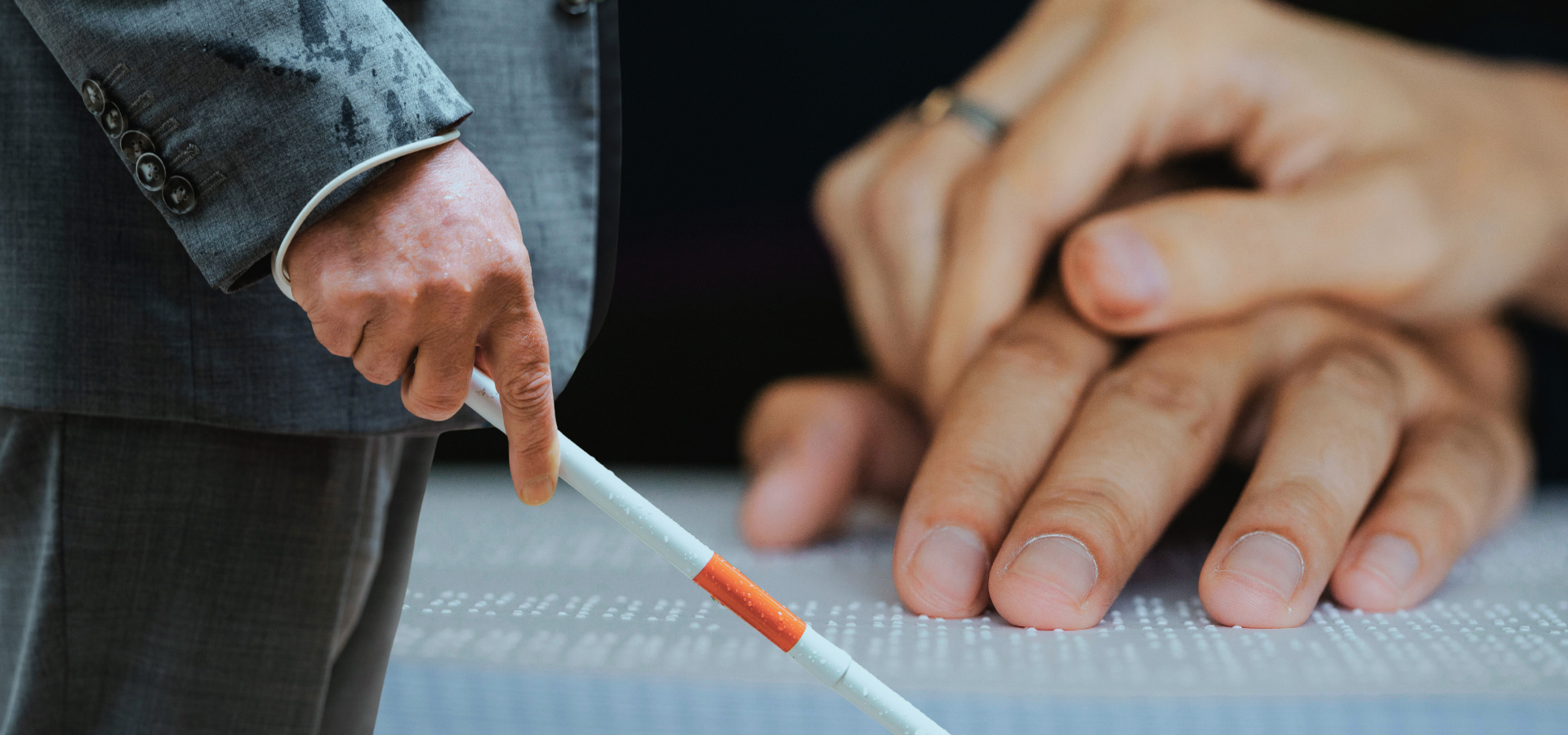International Day of the Blind — Together for an Accessible Future
November 13 marks the International Day of the Blind — a day when people around the world talk about equality of opportunity, inclusion, and how technology and human effort help those with visual impairments live on equal terms.
But before we talk about the present, it’s worth remembering how it all began.

From Valentin Haüy to the Digital Age
The story of the International Day of the Blind begins with the name of Valentin Haüy, an 18th-century French educator and humanist, born on November 13, 1745.
In 1784, at a time when people with visual impairments were rarely seen as capable of learning or working, he founded the world’s first school for the blind in Paris. Haüy developed a raised linear font called “uncial” and opened a printing press for books designed for blind readers.
It was the first time in history that blind people could independently read text with their fingers. Before that, others had to read aloud to them — now, they could hold a book themselves and perceive the written word through touch.
The name of the font comes from the Latin word meaning “equal in length to one ounce.” The uncial consisted of large, evenly shaped letters embossed on thick paper.
Haüy’s font had some limitations:
- The raised letters took up too much space, making the books bulky and heavy.
- Reading speed was very low because fingers had to follow complex shapes.
- Students found it difficult to write — the system didn’t allow for reverse reproduction of text.
Despite these drawbacks, Haüy’s idea was revolutionary for the 18th century. He proved that blind people were capable of learning, and that the sense of touch could substitute for sight in the act of reading.
That is why his birthday, November 13, was later established by the World Health Organization as a symbol — a reminder that accessibility begins not with technology, but with belief in human potential.
His methods laid the foundation for further research and inspired many people — including Louis Braille, who studied at Haüy’s school in 1819. But that’s another story.
Digital Accessibility Today
Today, technology opens more opportunities for blind and visually impaired people than ever before. Screen readers, voice assistants, Braille displays, navigation systems, and smart devices make the digital environment increasingly inclusive.
It’s now possible to read books, work with documents, study online, play games, and even create content — all with tools that speak or read for the user.
However, this abundance of options can be overwhelming. Every week, new apps, services, and devices appear — and not all of them are truly accessible.
Some people struggle to choose the right software, others spend weeks learning how a feature works, and many simply don’t know where to begin.
Numerous websites, games, and programs still aren’t adapted for screen readers; they contain unlabeled buttons or overly complex interfaces.
InviOcean and the People Who Change the Rules
For the InviOcean team, the International Day of the Blind is more than just a date on the calendar. It’s a reminder of why we exist.
Every day, we help people navigate the ocean of digital tools — to find accessible products, understand which technologies truly work, and which ones still need improvement.
We research, collect, and systematize knowledge about digital accessibility, publish educational materials and inspiring stories, so that every user can have examples, choices, information, and confidence that technology is truly made for everyone.
People contribute to this process in many ways — from a few hours of weekly volunteering, app testing, and providing feedback to financial donations and ongoing project support.
We want to thank everyone who makes this world more accessible. Your contribution truly matters. Each action brings us one step closer to a world where the digital environment is open to everyone.
An Accessible Future for All
Real strength lies in small steps — because it’s those steps that create big change.
Today, people with visual impairments can already feel this change: learning, work, creativity, and communication are becoming more accessible; technologies are unlocking new opportunities; and society is gradually becoming more inclusive and attentive.
On this International Day of the Blind, we want to congratulate everyone and wish each person confidence, joy in discovery, and the full realization of their potential.
And let accessibility and equality remain with us — every single day.
